For whom the Dolores Bell is ringing. Mexican Freedom War
Vice Kingdom New Spain
For three centuries, the territory of modern Mexico was part of the Spanish viceroy of New Spain - one of the largest and richest possessions of Madrid. The structure of the colony of New Spain at various times included the territory not only of Mexico, but also of the modern American states of Florida, Texas, California, and the “States of the Isthmus” - Guatemala, Belize, Nicaragua, El Salvador, Costa Rica, the Caribbean islands, including Cuba, and even the Philippine Islands in the Pacific, which are also administratively subordinate to the vice kingdom of New Spain. But the “core” of New Spain was Mexican lands. In the first half of the XVI century. The lands of modern Mexico, on the territory of which a number of Indian states were then located, the most famous of which was the Aztec Empire, were subordinated to the Spanish crown as a result of the campaigns of the conquistador Hernando Cortes. Cortes became the first ruler of New Spain in 1522. However, soon the Spanish king, fearing the excessive independence of Cortes, limited his power over the new lands. In 1535, New Spain received the status of a viceroy in Spain. Mexico became the administrative center of New Spain. The Viceroy of New Spain was directly subordinate to the Spanish king and the Supreme Council for Indian Affairs. In turn, assistance to the viceroy in managing the colony was provided by two audiences, in Mexico City and in Guadalajara. In 1786, 12 intendance shops were created on the territory of New Spain. Seven provinces of northern New Spain were transformed into Eastern and Western military districts, led by commanders, also directly subordinate to the Viceroy of New Spain.
The Vice Kingdom played an important role in ensuring the supply of precious metals - gold and silver - to Spain. However, the development of the economy of the colony for a long time went at a very slow pace. In fact, New Spain maintained regular economic ties only with the metropolis — through the port of Veracruz. In the mines worked dependent Indians, worked out a conscription - repartimento. As for agriculture, it also did not have a high level of development. Moreover, for a long time the metropolis forbade growing all those crops that grew in Spain itself. This was done solely for reasons of ensuring the competitiveness of Spanish producers - Madrid was afraid that cheaper products grown by Indian farm laborers, peons, would be a significant competitor to Spanish agricultural products. Therefore, due to the prohibitions on the cultivation of a number of popular crops, the agriculture of New Spain did not focus on exports and served exclusively the needs of the local population. The metropolis forbade New Spain direct trade not only with foreign countries, but also with other Spanish possessions in the New World. Imported goods into the colony were subject to very high duties, which contributed, on the one hand, to the maintenance of high prices for almost all types of imported goods, and, on the other hand, to the growth of smuggling and all kinds of abuse. The unenviable socio-economic position of the colony was one of the main reasons for dissatisfaction with the policy of the metropolis.
The other main reason for the growing contradictions between the colony and the center was the social system prevailing in the viceroyalty. At the bottom of the hierarchical pyramid of the New Spanish society there were negros - slaves, but their number in New Spain, as in other continental Spanish colonies, was never particularly high. Moreover, it tended to permanently decrease due to the reduction and then complete cessation of the importation of new slaves from West Africa. By the beginning of the XIX century. their numbers did not exceed 10 thousand people. Just above the Negroes were the Indians, who made up at least 40% of the population of the viceroyalty. The Indians for the most part possessed personal freedom and even the right to use land. But among them were the dependent laborers, the peons, and the representatives of the Indian elite, the “cacique,” that is, the elders of villages and tribes who were not taxed. Slightly higher Indians were listed mestizos - descendants of the links of the Spanish conquistadors and planters with Indian women. Basically, mestizos were engaged in trade and crafts, forming the basis of the urban lower and middle strata. They were deprived of the possibility of promotion to officer positions in the army, placement in the administrative apparatus of the vice-kingdom, participation in municipal elections. Then came two higher-level groups of the population of New Spain, who had all the rights of free citizens. First, it was the Creoles - the Spaniards, who were born in the colony. By the beginning of the 19th century, their numbers reached 1,1 million. Formally, the Creoles had all the rights, but in practice they were considered second-rate people compared to the Spaniards who came from the metropolis. Creoles were almost never appointed to the highest positions in the colonial hierarchy, although they constituted the majority of landowners, employees of the administrative structures of the viceroyalty, army officers and clergymen. However, only three Creoles managed to rise to the position of viceroy (there was a 61 victor in all history New Spain). Finally, the stratum of Spaniards who were born in Spain and arrived in the colony for service was the least numerous. At the beginning of the XIX century. it numbered no more than 15 thousand people, but in her hands was concentrated all the actual power over New Spain - the highest administrative, church and army posts.
Naturally, the Creoles of New Spain, like the Creoles of other Spanish colonial possessions in the New World, perceived the Spaniards from the metropolis rather negatively. They were called "gachupinami" - "people with spurs" and secretly despised, but were forced to fear, because the "gachupins" had administrative resources. In addition, the Creoles were unhappy with the economic policies of the metropolis, which hampered the full development of the viceroy and hampered the enrichment of local landowners and entrepreneurs. The policy of the metropolis could not help but arouse hatred among the broad masses of the Indian and the metisanized population, deprived of real civil rights and subjected to discrimination and extortion. Despite the fact that at the end of the 18th century, the Spanish leadership began to liberalize economic policies in the colonies, due to which the gradual development of agriculture and industry began in the latter, Madrid could not prevent the spread of separatist sentiments. Moreover, before the eyes of the Creole population of the Latin American colonies was an example of North America, whose inhabitants were able to achieve political independence from Great Britain - one of the strongest military and maritime powers of that time. Finally, in the colonies, ideas of freethinking spread from France to Spain, and from Spain to the viceroyalty of the New World, spread rapidly. In addition, in Spain itself, at the beginning of the 19th century, there was an aggravating political and economic crisis, which was also reflected in the moods of Spanish subjects separated from the Iberian Peninsula by the Atlantic Ocean.
Unusual priest Hidalgo
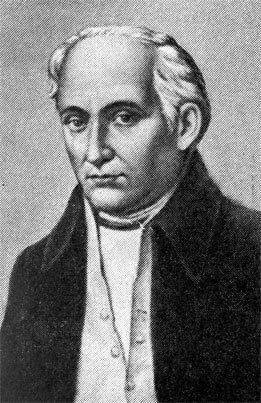 The Indians and mestizos became the main driving force of the unfolding uprising against Spanish domination. 16 September 1810 were they who spoke in the village of Dolores, inspired by the speeches of the priest Miguel Hidalgo. Father Miguel Hidalgo (1753-1811), whose full name sounded like Miguel Gregorio Antonio Ignacio Idalgo-i Costila-Gialaga Mondarte Villesenyor, was a native of Penhamo. It was in Penhamo that his parents married - Cristobal Hidalgo-i-Costilla, who served as manager on a local plantation, and his wife Ana Maria. In 1765, at the age of twelve, Miguel Hidalgo and his brother, Jose Joaquin, entered the Jesuit College of St. Nicholas in Valladolid. Despite the fact that the Jesuit College was an institution where future clergymen were trained, it gave a very good education. Hidalgo got the opportunity to get acquainted with the ideas of modern philosophy, physics and mathematics. Having given high hopes from a young age, Miguel himself became a teacher at sixteen, although he continued to receive an education himself. He became interested in dramaturgy and even staged several performances on the plays of Moliere. In 1790, thirty-seven-year-old Miguel Hidalgo became the rector of a Jesuit college in Valladolid, but for free-thinking he was soon dismissed from his post and transferred to the post of ordinary priest in one of the parishes. In 1803, he replaced his deceased brother Joaquin as priest in the village of Dolores. Despite the fact that Hidalgo was considered one of the best theologians of New Spain, becoming the head of the parish in Dolores, he directly engaged in improving the living conditions of his parishioners. On the initiative of Hidalgo, pottery, carpentry, weaving and saddlery workshops, tannery and a forge were opened. A pumping station appeared in the village, the breeding of silkworms and bees began, all initiated by a new priest. A middle-aged person, Hidalgo sought by all means to turn Dolores into a civilized place. The foremost ideas of the philosophers of the French Enlightenment penetrated into the Mexican village, which Father Miguel sympathized with.
The Indians and mestizos became the main driving force of the unfolding uprising against Spanish domination. 16 September 1810 were they who spoke in the village of Dolores, inspired by the speeches of the priest Miguel Hidalgo. Father Miguel Hidalgo (1753-1811), whose full name sounded like Miguel Gregorio Antonio Ignacio Idalgo-i Costila-Gialaga Mondarte Villesenyor, was a native of Penhamo. It was in Penhamo that his parents married - Cristobal Hidalgo-i-Costilla, who served as manager on a local plantation, and his wife Ana Maria. In 1765, at the age of twelve, Miguel Hidalgo and his brother, Jose Joaquin, entered the Jesuit College of St. Nicholas in Valladolid. Despite the fact that the Jesuit College was an institution where future clergymen were trained, it gave a very good education. Hidalgo got the opportunity to get acquainted with the ideas of modern philosophy, physics and mathematics. Having given high hopes from a young age, Miguel himself became a teacher at sixteen, although he continued to receive an education himself. He became interested in dramaturgy and even staged several performances on the plays of Moliere. In 1790, thirty-seven-year-old Miguel Hidalgo became the rector of a Jesuit college in Valladolid, but for free-thinking he was soon dismissed from his post and transferred to the post of ordinary priest in one of the parishes. In 1803, he replaced his deceased brother Joaquin as priest in the village of Dolores. Despite the fact that Hidalgo was considered one of the best theologians of New Spain, becoming the head of the parish in Dolores, he directly engaged in improving the living conditions of his parishioners. On the initiative of Hidalgo, pottery, carpentry, weaving and saddlery workshops, tannery and a forge were opened. A pumping station appeared in the village, the breeding of silkworms and bees began, all initiated by a new priest. A middle-aged person, Hidalgo sought by all means to turn Dolores into a civilized place. The foremost ideas of the philosophers of the French Enlightenment penetrated into the Mexican village, which Father Miguel sympathized with. At the beginning of the XIX century. Hidalgo suffered a serious financial blow. The fact is that at this time Spain, which became an ally of Napoleon Bonaparte, decided to replenish funds for the upcoming war against Great Britain and confiscated the property of all Creoles owed to church and secular authorities. The Hidalgo family fell into this category. The lands of the family were seized in favor of the crown, and overnight the well-to-be surname turned into the poor. Miguel Hidalgo's brother, Manuel Hidalgo, went mad, lost his property, and died in an insane asylum in 1809. So Miguel Hidalgo had his own personal reason to hate the Spanish crown and her policies in the viceroyalty.
Uprising in the village of Dolores
After the king of Spain, Ferdinand VII, abdicated in favor of Joseph Bonaparte, separatist sentiments intensified in the viceroyalty of New Spain. Creoles, who by inertia retained loyalty to the Spanish crown, could not understand why they should be subordinated to a relative of a Corsican officer who had seized power in France. Moreover, the activities of Bonapartes inflicted serious damage to the financial and economic interests of the Creoles, which were subject to even higher duties in order to extract maximum funds for the conduct of hostilities. In the circles of free-thinking Creoles there was growing discontent with the colonial status of New Spain, especially in the context of political events in the metropolis. Miguel Hidalgo, an elderly village priest, began to wonder about the uprising against the Spanish crown. In 1809, he was already 56 years old, but age did not become a hindrance to the active work of consolidating supporters. An elderly priest began to diligently study military craft, above all - engineering and artillery disciplines. At the same time, Hidalgo set about developing a practical plan for a military operation to start an uprising. He entered one of the separatist circles — along with Correidor Queretaro Miguel de Dominguez, his wife Joseph Ortiz de Dominguez, captain Ignacio Allende, and some other Mexican revolutionaries. Initially, it was decided to set the date of the uprising for December 1 1810. However, Captain Ignacio Allende proposes to revolt earlier - October 2. But on September 13 the Spanish authorities became aware of the planned performance. Josefa Dominguez sent the alcalde Ignacio Perez to warn Father Miguel Hidalgo, who at that time was in the village of Dolores.
The night from 15 to 16 September in the village of Dolores was very unusual. Miguel Hidalgo spoke to the assembled conspirators. The Padre said that now that the conspiracy had been exposed, it was too late to retreat, and there was no other way than to oppose the Spanish authorities. After this, Hidalgo and his associates attacked the local prison and released prisoners who joined the conspirators. Armed with sticks and stones, a small detachment was able to disarm the local military unit, arrest the manager, the tax collector and several other representatives of the colonial authorities. At dawn 16 September, the bells of the Dolores church rang. Locals, mostly Indians and mestizos, before whom Padre Miguel Hidalgo spoke before, stretched to the temple. Instead of the usual sermon this morning, he read a speech about the need for an armed uprising. Hidalgo demanded that the hated “Gachupins” be removed from power in the metropolis, to equalize the rights of white and colored new healers, and to solve the economic problems of the vice-kingdom. Calling on the residents of Dolores to form their own armed unit, Hidalgo declared that everyone who joined him from weapons, on horseback or on foot the warrior will receive a daily salary. At the end of the speech, Hidalgo called on the participants to win the freedom and independence of New Spain. The villagers gathered at the church met the speech of their priest with enthusiasm and chanted anti-Hispanic slogans. Now it was too late to stop, and in front of Father Hidalgo and his combat comrades could only wait for the armed struggle against the well-armed, trained and organized troops of the metropolis. Thus began the eleven-year war, which ended with the appearance on the world map of a new independent state - Mexico.
Victories and defeats of the rebels
57-year-old padre Miguel Hidalgo became captain-general of the rebel army and sent his associates to all the nearby provinces of New Spain - to Mexico City, Queretaro, Guanajuato, San Luis Potosi and Guadalajara. They had to raise the population of the provinces against the Spanish authorities and then connect with the main forces. 28 September, after 12 days after the start of the uprising, the troops under the command of Hidalgo took Guanajuato, one of the most important cities located in silver mines that mined about 25% of all Mexican silver. The Spanish soldiers and officers who defended Guanajuato were brutally murdered - the rebels personified them with all the adversities that for centuries fell on the peasant population of New Spain. Meanwhile, the Catholic Church, represented by Bishop Manuel Abad-i-Keipo, excommunicated Miguel Hidalgo and his supporters from the church, declaring them to be cursed as blasphemers. However, the angry speeches of the Spanish clergy could not stop the heat of the struggle. The units loyal to the Vice-King of New Spain suffered one defeat after another, and the next day after the capture of Guanajuato, the Hidalgo rebels entered Valladolid, the very city where all the youth of the rebel priest passed and where he made a career from college student to his rector . The rebel José de Ansorin was appointed commandant of Valladolid, who signed the decree abolishing slavery on 19 on October 1810. The initiator of the abolition of slavery in New Spain was Hidalgo himself - a follower of the ideas of the French Enlightenment, who considered the slavish submission of some people to others inadmissible, not to mention the sale, corporal punishment or slaughter of slaves. So the Mexicans were among the first in the Americas abolished slavery in the territory of New Spain. This move added credibility to Father Hidalgo, who was proclaimed by the Generalissimo of the American Nation.
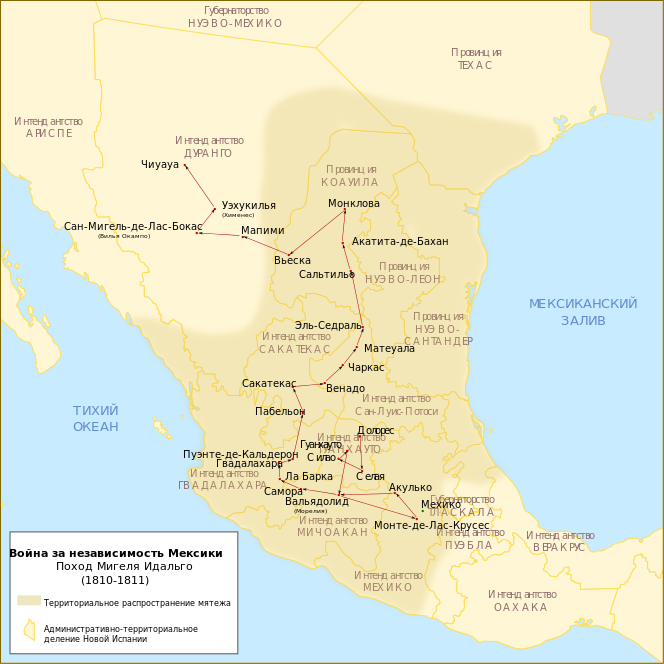
During their stay in Valladolid, the number of armed forces under the command of Father Hidalgo grew by 30 thousand people and was no longer 50, but 80 thousand soldiers and commanders. October 25, the rebels captured Toluca, October 30 - inflicted a crushing defeat on the troops of the vice-kingdom under the command of General Felix Kalehi. Gradually, the rebels approached Mexico City - the capital of the viceroyalty of New Spain. Hidalgo appealed to the viceroy with a proposal for negotiations, but received no response and, wanting to refrain from serious bloodshed, postponed the idea of storming the city. This decision allowed the viceroy's troops to strike back a serious blow. On November 7, General Felix Calleja was able to defeat the rebel forces in the Battle of Akulko. After this defeat, the rebels split into two columns. The first is still commanded by Miguel Hidalgo - she went to Valladolid, and the second - Ignacio Allende - this column went to Guanajuato. In early December, the troops of Hidalgo and Allende approached Guadalajara. 15 December 1810 Hidalgo issued a manifesto in which he explained his aspirations and announced the establishment of a revolutionary government from two ministries - the Ministry of Mercy and Justice under the leadership of José Maria Chico and the Ministry of State and Law, headed by Ignacio López District. Meanwhile, General Felix Calhech received an order from the viceroy to immediately take Guadalajara. The viceroy hoped that Calleja would succeed in defeating the rebel army fairly quickly, especially since at the beginning of 1811, the Calleja troops joined the forces of General Manuel Flon. 17 January 1811 was the battle of Puente de Calderon. The troops of the viceroy in this battle were commanded by General Calleja, by the rebel formations - Hidalgo, Allende, District, Aldama and Jimenez.
As a result of a six-hour battle, the royal troops still managed to defeat the rebel troops, using the advantage in armament. After a grenade got into a cart with ammunition of the rebel detachment, a panic began, and the viceroy used the soldiers to go on the offensive. Since then, the rebels begin to pursue failure. However, they managed to capture several more villages before the viceroy Venegas sent a letter asking for clemency. Ignacio Allende and Miguel Hidalgo rejected this proposal, stating that they are not criminals, but defenders of their homeland, and do not need pardon. By this time, the beginning of friction in the ranks of the rebels themselves. Ignacio Allende, who was still a career officer in the past, criticizes Father Miguel Hidalgo for refusing to listen to the advice of a seasoned military man and weak discipline in the ranks of subordinate units. 17 March 1811. Hidalgo was removed from his post as commander in chief of the rebel army, the new captain-general was Ignacio Allende. At about the same time, Allende received an offer from a certain Ignacio Elizondo to stay in his area. Since Elizondo was actively involved in the rebel movement, Allende and Hidalgo with their troops moved into his domain, unaware that Elizondo himself was working for the viceroy of Venegas. 21 March 1811 in the territory of the Ignacio Elizondo possessions, the rebel forces were surrounded by government troops. The son of Ignacio Allende Indalecio Allende was killed in the battle, while Allende Sr. and Miguel Hidalgo were captured by Spanish soldiers. The traitor Ignacio Elizondo received from the viceroy the military rank of colonel of the Spanish army. After Hidalgo and Allende were in the hands of the enemy, the leadership of the uprising took over Ignacio District. In Citacueiro, he formed the Supreme National American Assembly, which became the main organ for leading the anti-Spanish rebel movement in the territory of the viceroyalty. As for the captive leaders of the uprising, their fate was tragic. 26 June 1811 was sentenced by military tribunal to Ignacio Allende, Aldama and Jimenez. The corpses of the leaders of the uprising were beheaded. They also shot Miguel Hidalgo’s brother, Mariano Hidalgo. Father Miguel Hidalgo himself was deprived of the priesthood because, according to Spanish law at that time, a spiritual person could not be sentenced to death. After that, the supreme judge imposes a conviction on the guilt of Hidalgo in treason, revolt and premeditated murder, for which the defendant is sentenced to death. 30 July 1811 Mr. Miguel Hidalgo was shot in the courtyard of the Jesuit College in Chihuahua. The commandant of the prison, Colonel Salcedo, personally cut off the head of the already executed rebel leader. So ended the life of a man who is still considered the de facto father of Mexican statehood and is revered as one of the most important national heroes of the country.
Relay padre Morelos
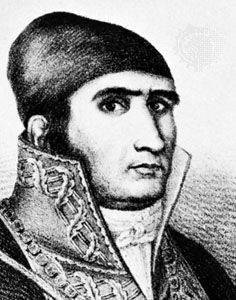 After Miguel Hidalgo’s death, the uprising was led by his colleague - another Catholic priest, Father Jose Maria Teklo Morelos and Pavon, or simply Jose Morelos (1765-1815). Hidalgo was not yet executed when Morelos, at the head of his supporters, captured Chilpancingo and Thistle. Then, in August 1811, the Morelos detachments captured a number of other important settlements. The ranks of revolutionaries grew, despite the execution of the first leaders of the uprising. At the end of 1811, the troops under the command of Morelos controlled Guanjuato, Guadalajara, Michoacan, Zacatecas, and a number of commissaries of the vice-kingdom of New Spain. By 1812, they actually surrounded Mexico City, which forced Madrid to urgently send additional military units to New Spain. However, in the spring of 1812, the Spaniards managed to defeat the troops of Morelos and by mid-year to regain control over most of the areas of the viceroy. At the same time, Madrid decided to make serious concessions to the Creoles, realizing that the preservation of the former social and political order in the viceroyalty would contribute to maintaining constant tension and expanding the hotbeds of the uprising and resistance to the colonial authorities.
After Miguel Hidalgo’s death, the uprising was led by his colleague - another Catholic priest, Father Jose Maria Teklo Morelos and Pavon, or simply Jose Morelos (1765-1815). Hidalgo was not yet executed when Morelos, at the head of his supporters, captured Chilpancingo and Thistle. Then, in August 1811, the Morelos detachments captured a number of other important settlements. The ranks of revolutionaries grew, despite the execution of the first leaders of the uprising. At the end of 1811, the troops under the command of Morelos controlled Guanjuato, Guadalajara, Michoacan, Zacatecas, and a number of commissaries of the vice-kingdom of New Spain. By 1812, they actually surrounded Mexico City, which forced Madrid to urgently send additional military units to New Spain. However, in the spring of 1812, the Spaniards managed to defeat the troops of Morelos and by mid-year to regain control over most of the areas of the viceroy. At the same time, Madrid decided to make serious concessions to the Creoles, realizing that the preservation of the former social and political order in the viceroyalty would contribute to maintaining constant tension and expanding the hotbeds of the uprising and resistance to the colonial authorities. So, 18 March 1812, the Spanish Cortes adopted a constitution, in accordance with which equality of the metropolis and the colonies in the representation in the legislative bodies of power was ensured, the equal civil rights of all the inhabitants of the colonies except for persons with Negro blood were asserted. In October, 1812 passed a law on press freedom. However, political liberalization entailed only the further growth of revolutionary euphoria in the colonies. Therefore, the authorities of the vice-kingdom were forced to cancel the elections to the Cortes in the territory of Mexico City. This decision led to the beginning of a new round of confrontation. At the end of October - November 1812, Morelos detachments took several more settlements, and in April 1813 captured Acapulco. 28 June 1812 in Acapulco issued a decree convening a national congress. Morelos was going to approve the composition of the rebel government at the national congress. 14 September 1813 National Congress began its work in Chilpancingo. The famous Declaration “Feelings of the Nation” was adopted, in accordance with which they proclaimed: the abolition of slavery and the hierarchy on the basis of racial principles, the introduction of a single tax, guaranteed property rights and the inviolability of the home, the prohibition of torture in investigative institutions. But Morelos did not succeed in spreading its influence over the whole territory of New Spain. He controlled only the southern regions of Mexico. 6 November 1813 adopted the “Solemn Act of the Declaration of Independence of North America”, although these words, with reference to the current military-political situation in New Spain, were still very loud.
At the beginning of 1814, the Spanish forces inflicted a serious defeat on the forces of Morelos. However, on October 22. 1814, the national rebel congress adopted the first constitution of Mexico - "The Constitutional Decree on the Freedom of Mexican America." In accordance with this document, in Mexico, a republican form of government was established with the separation of powers, equality of all citizens, freedom of speech and the press. However, Catholicism was proclaimed the state religion of Mexico, the possibility of practicing other religions in the country was not yet discussed at that time. In 1815, the city of Morelos was captured by the Spaniards and executed on charges of riot and high treason. After his death, the rebel forces led Vicente Guerrero and José Miguel Fernandez y Félix. The first commanded the rebel troops in Puebla, the second - in Oaxaca. However, in the period 1815-1820. the success of the rebel formations was very modest. The Spanish leadership announced an amnesty for every rebel who laid down arms, which had a negative effect on the number of rebel groups. Yes, and the people themselves were tired of fighting for a whole decade, especially since the real consequences of the war unleashed were not yet visible. In Creole environment began to spread moderate sentiment, including more and more calls to abandon the struggle for national independence. In addition, the role of the social class stratification of the Creole population of Mexico played a role. The wealthy part of the Creoles feared that after independence had been declared, their property would be plundered by Indians and freed slaves. These fears forced a rich part of the Creole population to gradually go over to the side of the Spanish authorities. Although the Gachupins considered Creoles to be the “second grade,” they could at least guarantee protection against the attacks of the Indians by the forces of the colonial forces. In the ranks of the rebels, on the contrary, there were a large number of Indians and mestizos, who very negatively perceived their exploiters — landowners and businessmen from the Creole environment. However, the political situation in Spain itself ensured the contradictory nature of the Creoles - for example, the spread in Europe of the revolutionary and liberal ideas of the Scarecrow Creole landowners, who saw the danger of the penetration of ideas of equality and freedom into New Spain. Therefore, in the environment of the prosperous part of the Creoles, voices began to be heard in support of the separation or, at least, the isolation of New Spain from the metropolis - just to conserve and preserve the established social order in inviolability.
"Star Hour" by Colonel Iturbide
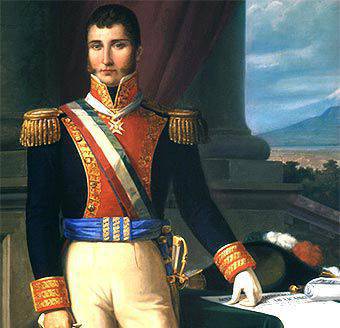 The end of 1820 was marked by the activation of the Spanish troops in the fight against the rebels. The viceroy Juan Ruiz de Apodaca sent a large contingent of Spanish soldiers and officers under the command of Colonel Agustín de Iturbide (1783-1824) against rebel troops Vicente Guerrero. Thirty-seven Agustin de Iturbide was an experienced officer. And he got his combat experience during the campaigns against the rebels - Iturbide participated in the persecution and capture of Miguel Hidalgo, and then Jose Morelos. Agustin de Iturbide was born in the family of a Spanish nobleman and Creole, in Valladolid. In 1798, at the age of 15, he began his service in the Spanish army and in 22 he reached the military rank of “colonel” assigned to him in 1820. When the war of independence began in 1810, Iturbide was part of the government forces . He participated in many operations against the rebels, in 1815 he commanded troops in two provinces of New Spain. Iturbide had his own views on the future of New Spain - he saw it as a constitutional monarchy. The independence of Iturbide and the presence of its own political position allowed the metropolitan authorities and the main military command to suspect the officer of high treason, so in 1816, he was forced to resign and resign from military service.
The end of 1820 was marked by the activation of the Spanish troops in the fight against the rebels. The viceroy Juan Ruiz de Apodaca sent a large contingent of Spanish soldiers and officers under the command of Colonel Agustín de Iturbide (1783-1824) against rebel troops Vicente Guerrero. Thirty-seven Agustin de Iturbide was an experienced officer. And he got his combat experience during the campaigns against the rebels - Iturbide participated in the persecution and capture of Miguel Hidalgo, and then Jose Morelos. Agustin de Iturbide was born in the family of a Spanish nobleman and Creole, in Valladolid. In 1798, at the age of 15, he began his service in the Spanish army and in 22 he reached the military rank of “colonel” assigned to him in 1820. When the war of independence began in 1810, Iturbide was part of the government forces . He participated in many operations against the rebels, in 1815 he commanded troops in two provinces of New Spain. Iturbide had his own views on the future of New Spain - he saw it as a constitutional monarchy. The independence of Iturbide and the presence of its own political position allowed the metropolitan authorities and the main military command to suspect the officer of high treason, so in 1816, he was forced to resign and resign from military service. However, the intensification of the struggle against the rebels in 1820 required that the viceroy bring in experienced officers to command the colonial forces. One of them was Iturbide, who was made a colonel and entrusted to lead the operation against the troops of Vicente Guerrero. Who would have thought that the Colonel of the Spanish Army Iturbide, a veteran of the war with the rebels, would suddenly come over to their side. But it happened, and Iturbide joined forces with the rebel forces Vicente Guerrero. 24 February 1821 Agustin de Iturbide published his appeal - the famous "Plan of Iguala" (after the name of the city of Iguala, where this document was born). It spoke of the need for three guarantees for the Mexican people - the independence of Mexico as a constitutional monarchy, the equality of rights of the Creole and Spanish people, and the preservation of the dominant positions of the Catholic Church. After the large army of Iturbide went over to the side of the rebels, the colonial troops of the viceroyalty practically ceased to resist the rebels. In April 1821, the Iturbide detachments captured Guanjuato, 22 of May - Valladolid, 28 of June - Queretaro, in early August - Oaxaca and Puebla. 19 August Iturbide troops entered into battle with government forces near the capital of the viceroy. The Spanish authorities were forced to compromise. 24 August 1821 was signed by the Treaty of Cordoba, according to which Spain recognized the political independence of Mexico in accordance with the principles put forward by Iturbide in the "Plan of Iguala". 27 September 1821 The Iturbide troops entered Mexico City, and on September 28 the Declaration of Independence of the Mexican Empire was published 1821. 18 May 1821 military units and residents of Mexico City proclaimed Colonel Agustín de Iturbide as emperor of Mexico under the name Augustine I. 21 July 1822 Mr. Agustín de Iturbide was crowned in Mexico City and received the symbols of power - the golden root and scepter. The eldest son of Agustín de Iturbide Jeronimo de Iturbide was proclaimed hereditary imperial prince. All the relatives of the colonel received the titles of princes, princesses and princes.
Independent Mexico became a republic
However, the activity of the self-proclaimed monarch caused a great outrage of a significant part of the rebels, who adhered to republican ideas. Almost from the first days of his reign, Iturbid had to fight again - this time against the republican formations that had risen in the provinces of Mexico. An uprising led by Santa Anna broke out in Veracruz, as a result of which Iturbide was forced to voluntarily abdicate the 29 throne in March 1823. The Mexican congress even provided the colonel - the ex-emperor with a cash allowance, only with the condition of Augustine I's lifelong emigration to Italy. However, in 1824, the city of Iturbide reappeared in Mexico, hoping to regain the imperial throne. Despite the ban on congress, Iturbide landed in Mexico, after which he was arrested. 19 July 1824. He was shot by his opponents.
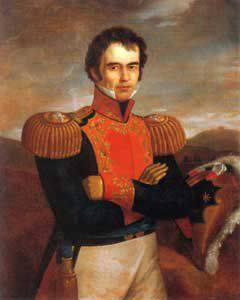 Mexico continued its further development as a republic; on October 4, 1824 was adopted the first republican constitution of the country. The first president of the country was elected veteran of the war of independence, General Victoria Guadalupe (1786-1843) - a former seminarian who left his studies under the influence of Miguel Hidalgo’s appeals and fought in the units of Hidalgo and Morelos. Guadalupe was one of the leaders of the republican movement in Mexico and, in December 1822, signed, together with General Santa Anna, the Plan Casa-Mata, according to which the monarchy established by the impostor Iturbide was abolished in Mexico . The years of rule of the first president of Mexico were significant for the country - it was at this time that the state’s financial system was centralized, slavery was finally abolished, the Mexican navy was established and diplomatic relations were established with Great Britain, the United States, Great Colombia and the United Provinces of Central America.
Mexico continued its further development as a republic; on October 4, 1824 was adopted the first republican constitution of the country. The first president of the country was elected veteran of the war of independence, General Victoria Guadalupe (1786-1843) - a former seminarian who left his studies under the influence of Miguel Hidalgo’s appeals and fought in the units of Hidalgo and Morelos. Guadalupe was one of the leaders of the republican movement in Mexico and, in December 1822, signed, together with General Santa Anna, the Plan Casa-Mata, according to which the monarchy established by the impostor Iturbide was abolished in Mexico . The years of rule of the first president of Mexico were significant for the country - it was at this time that the state’s financial system was centralized, slavery was finally abolished, the Mexican navy was established and diplomatic relations were established with Great Britain, the United States, Great Colombia and the United Provinces of Central America. After Mexico became an independent state, the time has come to honor the memory of those who first launched anti-Spanish resistance. In 1821, immediately after independence, the body of Miguel Hidalgo, the “holy father” of Mexican statehood, was exhumed and solemnly buried with his head in the cathedral of Mexico City. In 1925, Miguel Hidalgo’s body and head were reburied at the foot of the Independence Column in Mexico City. A number of administrative entities were named after Miguel Hidalgo, from the city of Dolores-Hidalgo to the entire state of Hidalgo. The name of the leader of the Mexican rebels is the international airport in Guadalajara. Every year on September 16, the president of Mexico rings the bell of Dolores, who is in the Presidential Palace in Mexico City. After the bell-ringing, the head of the Mexican state chanting the slogan “Long live Mexico!” Thrice. This is how the memory of the events of 205-year-old ago is preserved when the village priest began the struggle to achieve political independence in Mexico.
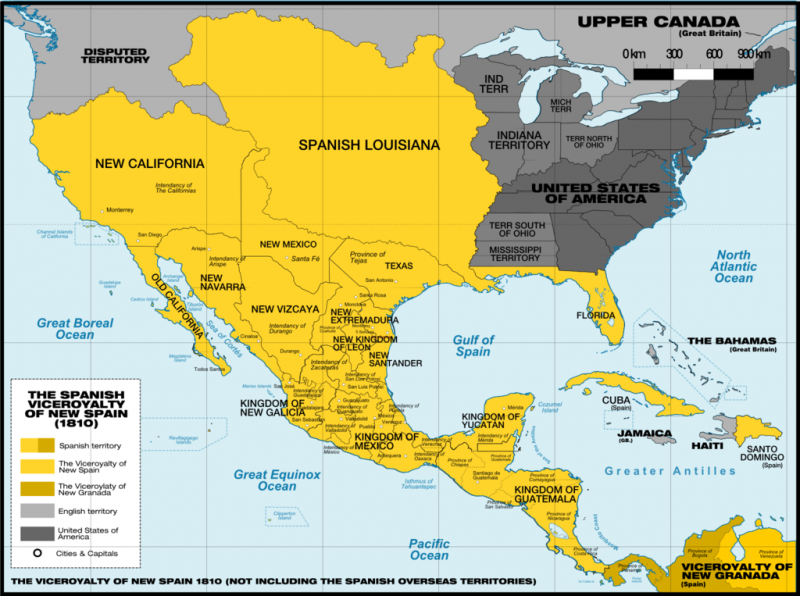
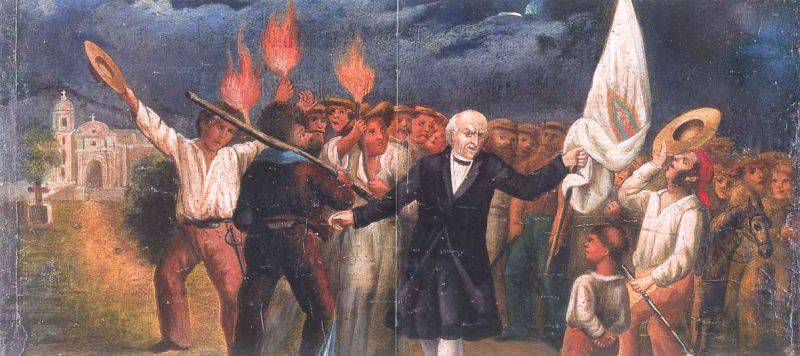
Information